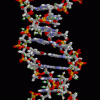
New research led by University of Toronto neurologist Andrew Lim sheds light on sleep disruption in aging adults.
“In many older people with insomnia and other patterns of sleep disruption, the underlying cause is unknown,” said Lim, assistant professor of neurology and neuroscientist at Sunnybrook Health Sciences.
“We provide evidence that loss of neurons in a particular region of the brain that controls sleep may be an important contributor to insomnia in many older individuals.” Continue reading














